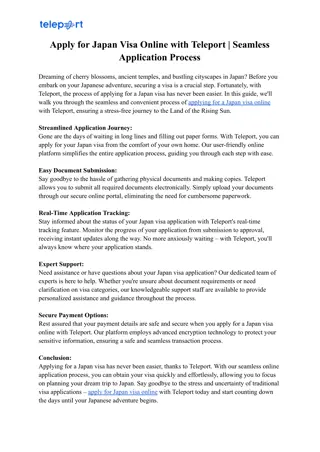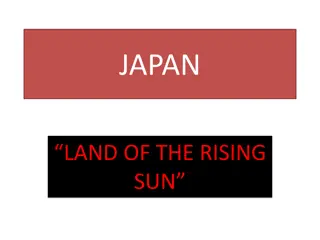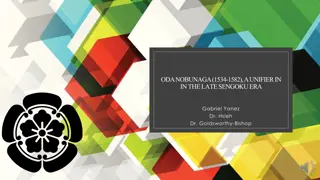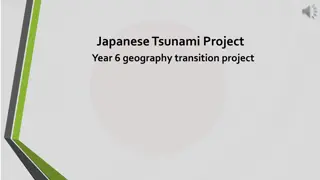
Body Center of Mass Trajectory Coordination in Joint Movements
Explore how joint coordination shapes the trajectory of the body center of mass in different tasks, with a focus on the relationship between COM path and joint movements. This study delves into the complexities of multi-joint motions, the central nervous system's role in controlling COM, and the redundancy in joint combinations for determining COM coordinates during downward squatting. Gain insights into whole-body motions and the organization of joint movements for maintaining equilibrium and accomplishing specific tasks.
Download Presentation

Please find below an Image/Link to download the presentation.
The content on the website is provided AS IS for your information and personal use only. It may not be sold, licensed, or shared on other websites without obtaining consent from the author. If you encounter any issues during the download, it is possible that the publisher has removed the file from their server.
You are allowed to download the files provided on this website for personal or commercial use, subject to the condition that they are used lawfully. All files are the property of their respective owners.
The content on the website is provided AS IS for your information and personal use only. It may not be sold, licensed, or shared on other websites without obtaining consent from the author.
E N D
Presentation Transcript
Organized joint coordination forms a task-dependent trajectory of the body center of mass Yoichiro Sato1), Hiroshi Nagasaki2), Norimasa Yamada3) 1) Hokkaido University of Science, Department of Physical Therapy 2) Tohoku Bunka Gakuen University 3) Chukyo University
Introduction Whole-body motions involve multi-joint movements. Various combinations of joint movements are used to accomplish a displacement of body center of mass (COM). The central nervous system select one combination of joint movements from an innumerable set. The central nervous system needs to control various potential COM and joint movements. The degree of freedom problem (Bernstein, 1967) Page 2
Introduction Solutions for the problem have been proposed. In a sit-to-stand motion, the central nervous system would control primarily the body COM (Scholz & Sch ner 1999). In a task maintaining the equilibrium against perturbations, the central nervous system controls only the body COM (Scholz et al. 2007) These proposed that the central nervous system controls only the COM but not joint movements We hypothesized Coordination among joints should organize as a lawful shape Page 3
Introduction We selected downward squatting as a task to elucidate the mutual relationship between the COM trajectory and joint movements. Individuals can perform this motion with various COM trajectory without falling as his COM represents his base of support (Massion 1992). Combinations among joints are redundant to determine COM coordinates in this motion. the purpose was to Elucidate the relationship between the COM path and shape of joint coordination with altering one segment angle. Page 4
Methods Participants & Procedures Eight healthy males (aged 23 yrs; height 1.73 m; mass 67.6 kg) The subjects performed squat downward by about 15 cm Speed: subject's preferred Conditions: the trunk angle relative to the vertical line varied at the final position; 0, 20, 30, 50, and 70 degrees Five trials were performed under each condition after practice a few times 0 20 30 50 70 Page 5
Methods Analysis Three-Dimensional motion analysis system (Vicon 370, 60 Hz) Infrared reflective markers were placed on Right Shoulder, Hip, Knee, Ankle, and Toe The data were smoothed by using a low pass filter at 5 Hz The segment angles were calculated The COM coordinates (X, Y) of the whole body in the sagittal plane were estimated X = m1x1 + m2x2 + m3x3 Y = m1y1 + m2y2 + m3y3 Relative anteroposterior displacements were calculated m3 (x3,y3) (X,Y) m2 (x2,y2) m1 (x1,y1) Page 6
Methods Statistical analysis Two separate repeated measure analysis of variance were performed for the relative anteroposterior displacement of the COM The cutoff for statistical significance was set at P < 0.05 Page 7
Results Center of Mass Trajectory 0 0 0 0 20 30 0 0 50 70 Upward 0.1 m 0.1 m Anterior The relative anteroposterior displacement showed no statistical difference Page 8
Results Shape of Joint coordination Thigh angle constant Shank angle systematical alteration Page 9
Results Joint coordination (Timing) 70 50 30 20 0 Relationship between Knee and Hip flexions Linear under all conditons Page 10
Discussion COM trajectory COM trajectory showed no difference under all trunk conditions Paths of the COM show the task-dependent shape (Saunders et al, 1953; Bernstein, 1996) COM trajectories showed approximately vertical paths in almost subjects. The verticality is the form that minimized changes of joint torques (Winter et al, 2001; Yamasaki et al, 2011) Page 11
Discussion Shape of joint coordination The shank inclination angle decreased as the trunk angle increased Shank and trunk angles coordinate together (synergy (Latash et al, 2002) ) The thigh angle remained constant Thigh angle determines a depth of COM during squatting Page 12
Discussion Joint coordination (Timing) Relationship between knee and hip flexions showed linear Knee and hip joints flex simultaneously during squatting This finding would useful for healthcare exercises Ex) Teaching/Coaching squatting exercise etc. Page 13
Conclusion The findings would help to improve individual s health Page 14
Thank you for your attention! Page 15






















